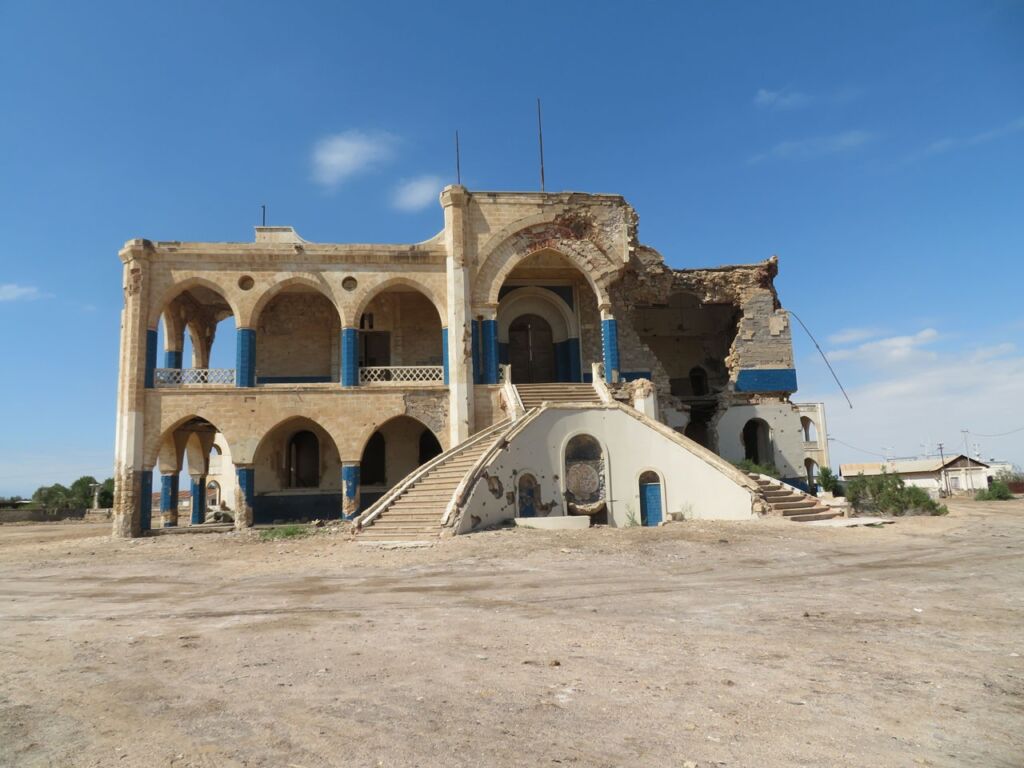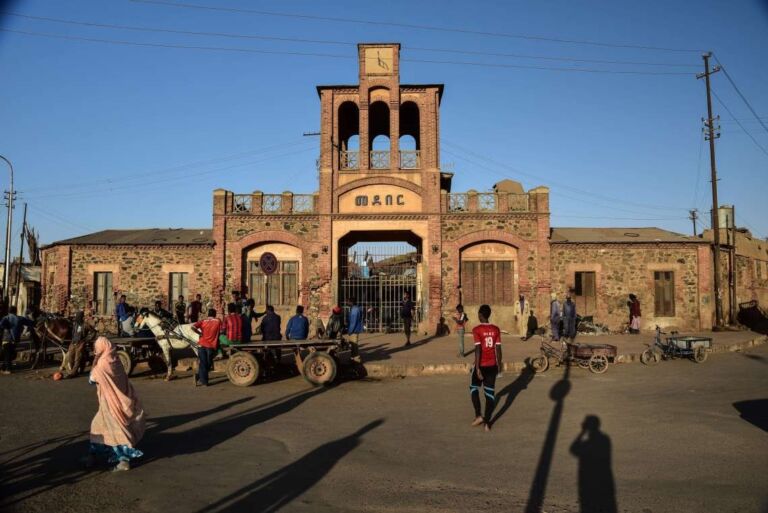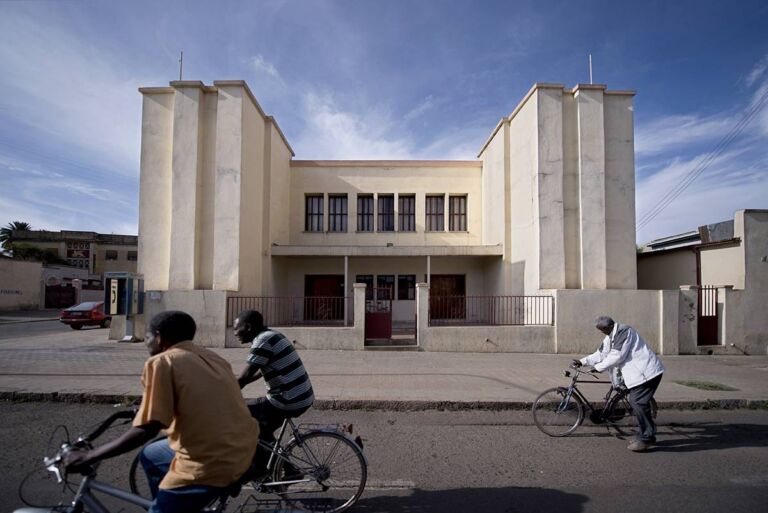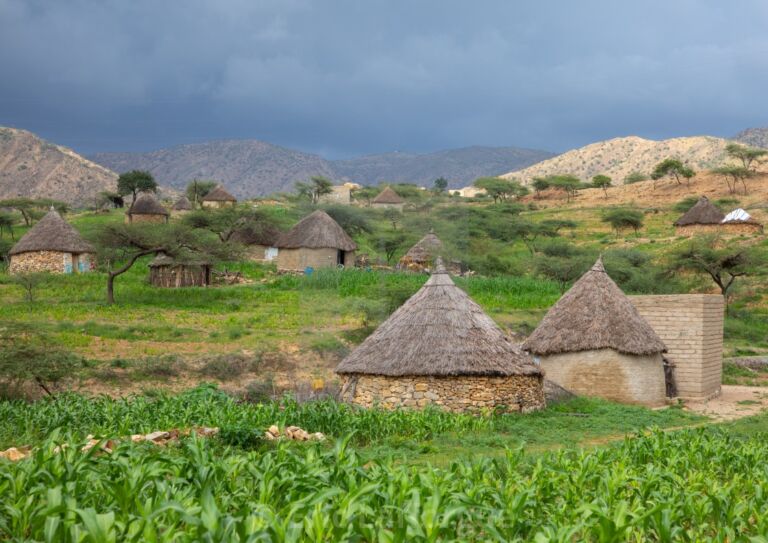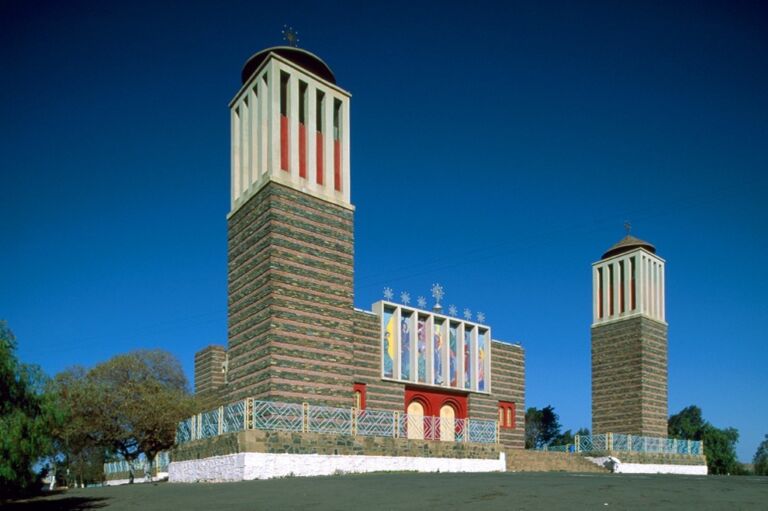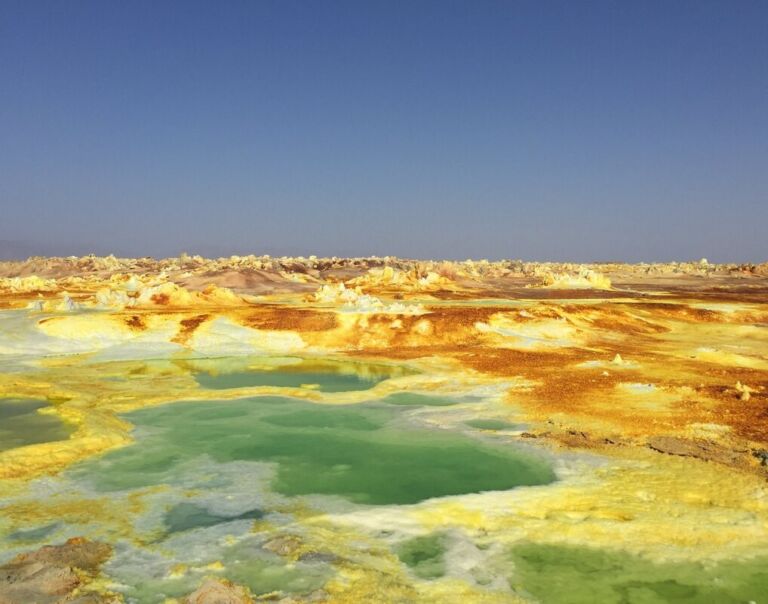This trip starts in Massawa and can be combined with one of our packages in Asmara or we can also help you getting to Massawa coming from Asmara.
Massawa is a port city on the Red Sea, with about 38,000 inhabitants and used to be the country’s capital until 1897. It once was one of the most important ports around the Red Sea. The city is located about 2 meters above sea level on two islands (Massawa and Taulud) off the coast and on the mainland. The historic center of Massawa is located on the outermost of these two islands. Massawa is one of the hottest cities on the planet, so it’s important to plan your visit well and avoid the hottest period. It’s best to book between November and April.
Because of the different colonisers the city has known, we find Portuguese, Arab, British, Italian and Turkish remnants in the City of Islands. The city used to be a cultural hub which drew artists and intellectuals and was once the most important city under the Italian rulers who connected Massawa to Asmara by railroad. We still find a lot of Ottoman influences in the city, especially on the architecture as well as several buildings and structures which were developed by their successors, the Egyptians and finally a lot of beautiful Italian houses.
Itinerary
Day one: Today we’ll be showing you around the old town, the most notable buildings as well as the coastline. We’ll also show you a good place to have lunch.
Day two: Today we’ll head out early in the morning to discover the sites of Adulis, the ancient port of Zula and the village of Foro.
Adulis is a historic town and archaeological site in the Semenawi Keyih Bahri region of Eritrea, approximately 45 km south of Massawa. It was a port city of the Kingdom of Aksum on the coast of the Red Sea. Adulis was on the trade routes with Greece and the Byzantine Empire. In ancient Egypt, Adulis was probably a place in the mythical Land of Punt. The Periplus of the Erythrean Sea mentions Adulis, and describes the place as a trading place for, among other things, ivory and slaves. In the 2nd and 3rd century AD. the city was frequented by Roman traders.
A work from the 4th century mentions a journey of an Egyptian jurist to India. He is said to have been accompanied on part of his journey by one Moses, Bishop of Adulis. The Byzantine Kosmas Indikopleustes mentioned two inscriptions he had found in Adulis in the 6th century. One inscription told of the war elephants that Ptolemy III Euergetes I had taken from this region. The other inscription - called Monumentum Adulitanum - told of the victories that a king of Aksum, possibly Sembrouthes, had won in Arabia and northern Ethiopia.
Thanks to Adulis, Aksum had control of the Red Sea. The port was built around 525 AD. was used as a base to invade the kingdom of Himyar. In the end, little more was heard of Adulis. Attacks from Aksum on the Arabian coast would continue until 702. Adulis is said to have been occupied by muslims, who thereby put an end to Aksum's access to the sea. This would isolate Aksum from the Byzantine Empire and other allies. The city is also occasionally mentioned by muslim writers. In any case, it seems that Adulis fell into disrepair from the 7th century onwards.
Adulis was one of the first sites in ancient Aksum to be excavated. A French team conducted an initial survey in 1840, and in 1868 staff of British officer Robert Napier excavated several buildings, including the foundations of a possibly Byzantine church. The first scientific excavations took place in 1906 by a German expedition led by R. Sundström. He uncovered a large building in the north of Adulis that he labeled a palace. Aksum coins were also found. The research results were published in 1913.
The Italian Roberto Paribeni discovered a few other buildings in 1907, including houses. Pots were also found, such as imported amphorae from Aqaba.It then took about 50 years before the next series of excavations took place. In 1961 and 1962, Ethiopia sent an expedition led by Francis Anfray to Adulis. In addition to material indicating a strong link between Adulis and Aksum, a layer indicating a destruction of the city was also found.In the deepest layers, glass artifacts that closely resemble specimens from Egypt's 18th dynasty have been found. A bottle has also been found that must have come from Abu Mena and must have been taken to Adulis by a pilgrim. Eritrea gained independence from Ethiopia in 1991. Efforts have been made from Eritrea to recover the archaeological finds residing in Ethiopia.
After our tour in Adulis, we’ll head to Zula, a small town on the Red Sea coast and four kilometer away from Adulis. Zula is a port where the Aligede River and the Red Sea connect and close to mangroves. An international team of researchers discovered a paleolithic site with stone and obsidian tools of over 125.000 years old near the Bay of Zula.
Our tour starts early in the morning coming from Massawa. We ask you to bring a packed lunch and enough water. Please bring sunscreen, sunglasses and a hat to protect yourself against the sun.
Day 3: End of tour
Includes:
- Two nights at the hotel in Massawa
- Professional local guide: English or Italian speaking
- Visiting of all the sites as described in the programme
- Entrance fees
Doesn’t include:
- Meals and drinks


